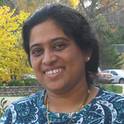Stem cells have an enormous capacity of self-renewal, as well as the ability to differentiate into specialized cell types. Proper control of these two properties of stem cells is crucial for animal development, growth control, and reproduction. Germline stem cells (GSCs) are a self-renewing population of germ cells, which generate haploid gametes (sperms or oocyte) that transmit genetic information from generation to generation. In Drosophila testis and ovary, GSCs are anchored around the niche cells. The cap cells cluster in females and hub cells in males act as a niche to control GSC behavior. With highly sophisticated genetic techniques in Drosophila, tremendous progress has been made in understanding the interactions between stem cells and niches at cellular and molecular levels. Here, we provide details of genetic, immunofluorescence labeling, and in situ hybridization techniques in identification and characterization of stem cells in Drosophila male and female germline niches.
Available at: http://works.bepress.com/madhuri_kango-singh/28/

Stem Cell Niche is part of the Methods in Molecular Biology book series.
Permission documentation on file.